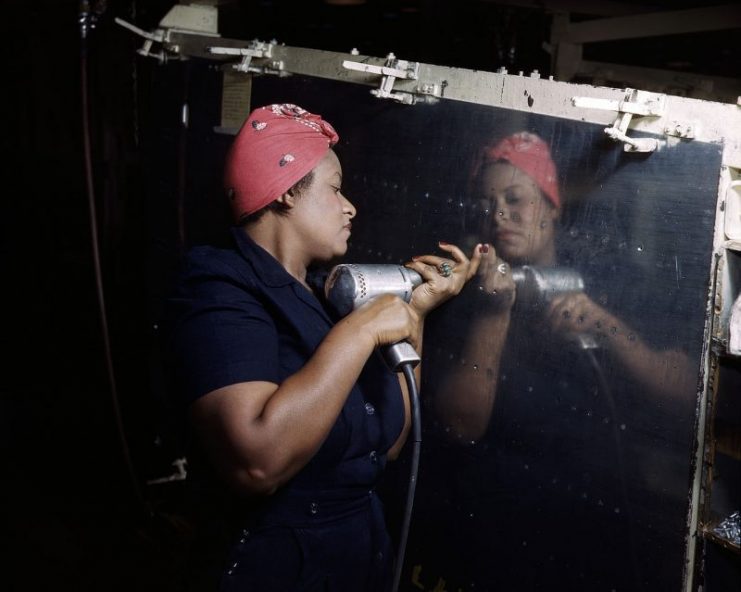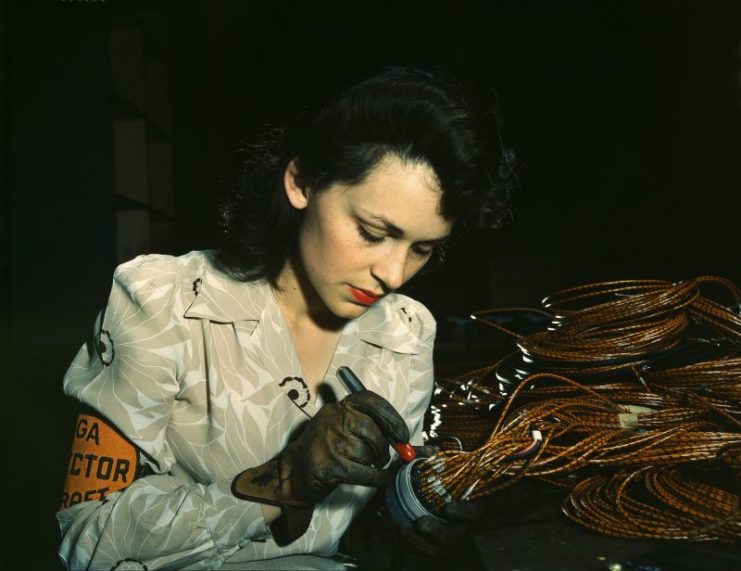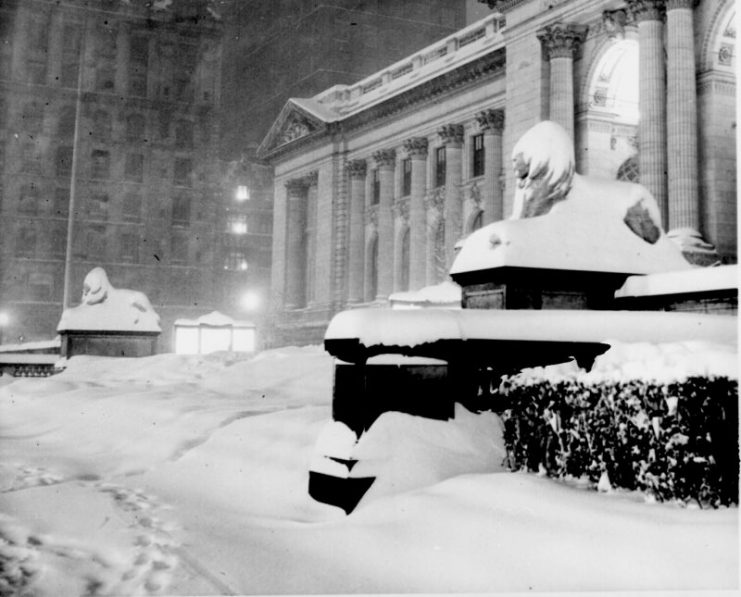During World War II, many women in the United States took over formerly male-driven occupations as American men went off to fight in the war, leaving an employment shortage that the women were eager to help alleviate. Women took over as riveters, crane operators, cab drivers and even professional baseball players. Still, there was one occupation that seemed like a woman would not be able to fill: department store Santa.
In 1941, before the US had even officially entered the war, the St. Louis Star-Times worried that the war would lead to employment shortages which would need to be filled by women. They confessed that there were many areas that a woman could step in and do the job, but they would not concede the role of Santa to a lady, feeling that children would not be able to accept such a deviation from the normally accepted Santa.
But the idea wasn’t a new one, even in 1941. In Boston, Filene’s had hired a Mrs. Santa Claus to help Santa out as far back as 1906. Back then, most people weren’t even aware that Santa was married. The first known mention of a Mrs. Claus was in an 1849 short story.

It wasn’t until the 50s and 60s when Nat King Cole sang “Mrs. Santa Claus” and Phyllis McGinley wrote the children’s book “How Mrs. Santa Claus Saved Christmas” that the public warmed to the notion of Santa’s wife. But Santa himself was exclusively the domain of males.
Charlie Howard was a department store Santa who trained other Santas. In 1937, he announced that his training program would include women. That year, he announced that two women were going to graduate. Their job would be to work with little girls to find out what they wanted from Santa.
In 1942, less than a year after the US entered the war, a Chicago department store began to use a woman in the role of Santa. According to newspaper accounts, children did not seem to mind the difference.
A Woolworth’s in New Jersey hired a female Santa in 1942 when they couldn’t find a man to fill the role. She wore a skirt instead of pants, but kept the white wig and beard.

The reaction was mixed to the new co-ed Santas. The Washington Post felt it better to have a lady Santa than no Santa at all for the children. The Wichita Daily Times felt that if the children were able to accept the previous fake-Santas as real, then they likely would have no trouble with the new, feminine Santas.
However, Henry McLemore, a syndicated columnist, was shocked by the first lady Santa he saw. He felt that the lady portraying Santa did not fit his vision of Santa as someone who carries a large, heavy sack. He also seemed to have a problem with her giggling, as he felt Santa was not someone who would giggle.
A New York paper interviewed several male department store Santas who felt that women couldn’t handle the role and that there were plenty of older gentlemen to play Santa if the younger men were all off fighting.

But in 1943, Saks Fifth Avenue did hire a female Santa. Daisy Belmore was a British actress who was known for appearing in All Quiet on the Western Front in 1930 and Dracula in 1931. She took the job as Santa with Saks and played it pretty close to the typical image of Santa but with a skirt and without the beard.
Max Factor, Jr., a Hollywood makeup artist, had made an effort to standardize the look of Santa Claus. In 1943, he began working to create a standard female Santa as well. His version looked much like the male Santa but with nail polish.
By 1944, women frequently played Santa around the country but the next year, Germany and Japan surrendered, and the war was over. While women maintained their roles working in manufacturing and other industries, Santa returned to being a male-dominated job.
